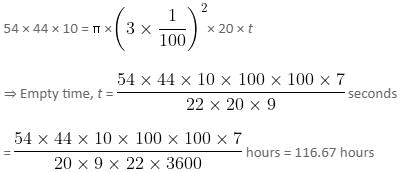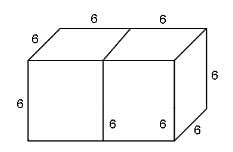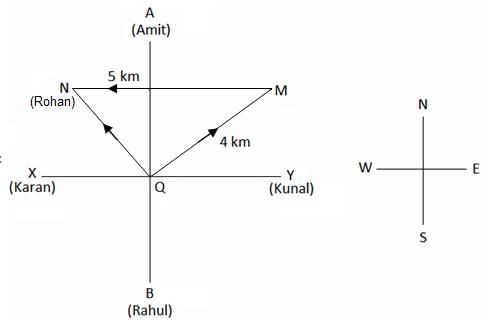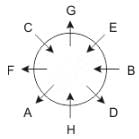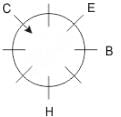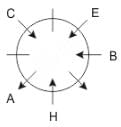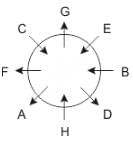Indian Army Agniveer Mock Test - 8 - CDS MCQ
30 Questions MCQ Test - Indian Army Agniveer Mock Test - 8
The average rainfall for the first 3 days out of five days was recorded to be 0.45 inches. The rainfall on the last two days was in the ratio 2:3. The average of five days was 0.40 inches. What was the rainfall on the last day?
What is the rate of simple interest for the first 4 years if the sum of Rs. 360 becomes Rs. 540 in 9 years and the rate of interest for the last 5 years is 6%?
Raju can do 25% of a piece of work in 5 days. How many days will he take to complete the work ten times?
The sum of two even numbers is six more than twice of the smaller number. If the difference between these two numbers is 6, If the larger number lies between 15 to 25 Which is the smaller number?
Find the last number which when divided by 6, 8, 15 and 30 leaves remainder 2, 4, 11 and 26 respectively?
When the price of rice is increased by 30 percent, a family reduces its consumption such that the expenditure is only 20 percent more than before. If 50 kg of rice is consumed by family before, then find the new consumption of family (approx.)
A man has 4000 rupees in his account two years ago. In the first year he deposited 20 percent of the amount in his account. In the next year he deposited 10 percent of the increased amount in the account. Find the total amount in the account of the person after 2 years.
A 60 year old father in his will divides his money among his three sons in the ratio of their ages. The first (eldest) son is 8 years older than the third son. The second son is 4 years younger to the first son. The third son's age is 1/3rd of his father's age. If the father had Rs. 12,00,000, the share of second son is:
A rectangular reservoir has dimensions 54 meters × 44 meters × 10 meters. An outlet pipe of circular cross-section has a radius of 3 centimeters and the water runs through the pipe at a rate of 20 meters/second. What is the time taken by the outlet pipe to empty the reservoir full of water?
Two cubes, each of edge length 6 cm, are joined end to end. The surface area of the resulting cuboid is
Consider the following statements:
- The discussions in the Third Round Table Conference eventually led to the passing of the Government of India Act of 1935
- The government of India Act of 1935 provided for the establishment of an All India Federation to be based on a Union of the provinces of British India and the Princely States. Which of the statements given above is/are correct?
Which National Highway is called Shershah Suri Marg?
Which commission made the recommendations which formed the basis for the Punjab Reorganisation Act which created the states Punjab and Haryana?
Well preferred tree fossil supposed to be from Jurasic Age in India is reported from:
Which organization leads the global efforts for the preservation of the ozone layer?
An object at rest will remain at rest and an object in motion will remain in motion until and unless it is acted upon by an external force. This is Newton's –
Sensation of sound persists in our brain for about -
Which one of the following is a modified stem?
Which one of the following is not a function of the liver?
If the radius of blood vessels of a person decreases his/her blood pressure will
Which one of the following organic compounds has fruity smell?
What material is used to make electric heater coil?
Pasteurisation is the process in which milk is heated to –
Directions: Study the following information carefully to answer the given question.
There are two axes AB and XY such that A is in north, B is in south, X is in west and Y is in east. Q is the point of intersection of both the axes. At A, B, X and Y, there are houses of 4 friends - Amit, Rahul, Karan and Kunal, respectively. Another friend Rohan is standing at the point 'Q' facing north-east direction. He then walks 4 km in the same direction which he is facing and reaches 'M'. Then he turns 135° anticlockwise and walks 5 km straight and reaches 'N'. Amit starts walking towards south from his house and reaches point Q. After reaching Q, Rohan tells Amit to meet him at N; so Amit travels the shortest distance possible to reach N in the end where he meets Rohan.
Q. Find the shortest distance Amit travels from Q to reach the point N.
Directions: These questions are based on the following information, read the comprehension carefully to answer the given questions.
Eight people A, B, C, D, E, F, G and H are sitting around a circular table but not necessarily in the same order. Some are facing inside and some are facing outside. Not more than two people facing same direction are sitting together.
H sits third to the right of C who is not facing outside. Immediate neighbours of H are facing same directions with respect to each other but opposite direction with respect to H who is facing inside. B is the immediate neighbor of E and both are facing same direction. E sits second to the left of C who is not the immediate neighbor of B. There are equal number of persons facing inside and outside direction. B sits third to the left of A and both are facing opposite directions to each other. H sits to the immediate right of D. F sits second to the left of G.
Q. How many persons are sitting between A and G while counting from left of G?
The positions of how many digits in the number 2451479638 will remain same when the first half and the second half of the digits are arranged in ascending order separately?



